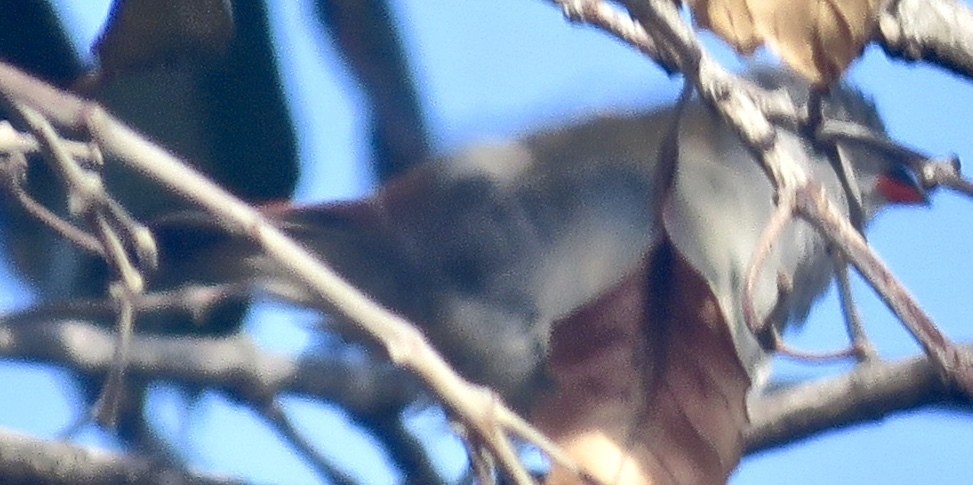Swee Waxbill
A species of Yellow-bellied and Swee Waxbills Scientific name : Coccopygia melanotis Genus : Yellow-bellied and Swee Waxbills
Swee Waxbill, A species of Yellow-bellied and Swee Waxbills
Botanical name: Coccopygia melanotis
Genus: Yellow-bellied and Swee Waxbills
Content
Description General Info
Description
The swee waxbill is 9–10 cm long with a grey head and breast, pale yellow belly, olive back and wings, red lower back and rump, and a black tail. The upper mandible is black and the lower red. The male has a black face, but the female's face is grey. Juveniles are much duller than the female and have an all-black bill. 
Size
10 cm
Nest Placement
Shrub
Feeding Habits
Swee Waxbill predominantly consumes small grass seeds and insects, adapting to spiders, aphids, termites, mealworms, and moths in captivity. Typically foraging in pairs or small groups, swee Waxbill showcases flexible feeding behaviors tailored to its environment.
Habitat
Swee Waxbill generally inhabit upland dry shrubland and open forest areas, with some subspecies found in lowland regions. These birds are versatile in their habitat preferences, adapting to various landscapes from open grasslands and shrubby grass to coastal bush. They are also encountered around farmsteads and houses, ranging from sea-level to altitudes as high as 1800 meters. Swee Waxbill often form small groups and are known to frequent large gardens, demonstrating their ability to coexist in human-modified environments.
Dite type
Granivorous
General Info
Feeding Habits
Bird food type
Behavior
The swee waxbill is typically found in uplands in dry shrubland and open forest habitats. Some subspecies also occur in lowlands, and may be seen in large gardens. This species is a common and tame bird typically seen in small parties, and does not form large flocks. The swee waxbill's call is typically considered a soft swee, swee. 
Species Status
Not globally threatened.
